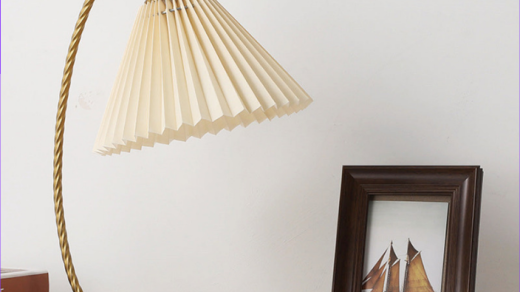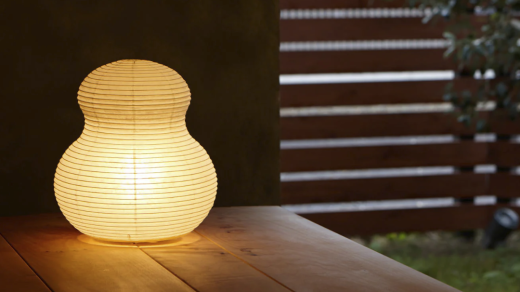Ceiling lights Fasuhouse are an essential element of home decor. They not only provide illumination but also add style and personality to a room. Whether you’re looking to create a cozy ambiance or make a bold statement, the right ceiling light can transform any space. In this article, we will explore the importance of ceiling lights in home decor, the benefits they offer, and how to choose the right one for your space.
Ceiling lights play a crucial role in home decor as they provide general lighting for a room. They illuminate the entire space, making it functional and inviting. Without proper ceiling lighting, a room can feel dull and uninviting. Ceiling lights also serve as a focal point in a room, adding visual interest and enhancing the overall aesthetic. They come in various styles, sizes, and designs, allowing you to find the perfect fit for your home.
One of the main benefits of ceiling lights is their versatility. They can be used in any room of the house, from the living room to the bedroom, kitchen, bathroom, and dining room. Ceiling lights come in different types such as chandeliers, pendant lights, flush mounts, semi-flush mounts, and recessed lights. Each type offers its own unique style and functionality, allowing you to choose the one that best suits your needs and preferences.
Choosing the Right Ceiling Light
When choosing a ceiling light for your space, there are several factors to consider. First and foremost is the size of the light fixture. You want to make sure that the size of the light is proportionate to the size of the room. A small light fixture in a large room will look out of place, while a large fixture in a small room can overwhelm the space.
Style is another important factor to consider when choosing a ceiling light. The style should complement the overall decor of the room. If you have a modern or contemporary style, you may opt for sleek and minimalist designs. On the other hand, if you have a traditional or vintage style, you may prefer ornate and decorative fixtures.
Functionality is also key when choosing a ceiling light. Consider the purpose of the room and how you will be using the light. For example, in a kitchen, you may want bright and focused lighting for cooking and food preparation. In a bedroom, you may prefer soft and ambient lighting for relaxation and sleep.
Types of Ceiling Lights
There are several types of ceiling lights to choose from, each offering its own unique style and functionality.
Chandeliers are a classic choice for adding elegance and sophistication to a room. They are often used in dining rooms, entryways, and living rooms. Chandeliers come in various sizes and designs, from traditional crystal chandeliers to modern and contemporary styles.
Pendant lights are another popular choice for adding style and personality to a space. They are versatile and can be used in any room of the house. Pendant lights hang from the ceiling by a cord or chain, creating a focal point in the room. They come in various shapes, sizes, and materials, allowing you to find the perfect fit for your space.
Flush mounts are a great option for rooms with low ceilings as they sit flush against the ceiling. They provide general lighting without taking up too much space. Flush mounts come in various styles, from simple and understated to decorative and ornate.
Semi-flush mounts are similar to flush mounts but hang slightly lower from the ceiling. They offer a bit more visual interest and can be used in rooms with higher ceilings.
Recessed lights are installed into the ceiling, creating a clean and streamlined look. They provide ambient lighting and can be used to highlight specific areas or objects in a room. Recessed lights are often used in kitchens, bathrooms, and hallways.
How to Install a Ceiling Light
Installing a ceiling light may seem like a daunting task, but with the right tools and instructions, it can be a straightforward process. Here is a step-by-step guide to installing a ceiling light:
1. Turn off the power: Before starting any electrical work, make sure to turn off the power to the circuit you will be working on. This can be done by flipping the corresponding circuit breaker in your electrical panel.
2. Gather the necessary tools: You will need a screwdriver, wire strippers, wire connectors, and a ladder or step stool.
3. Remove the old fixture: If there is an existing light fixture, carefully remove it by unscrewing the mounting screws and disconnecting the wires.
4. Install the mounting bracket: Attach the mounting bracket to the electrical box in the ceiling using the provided screws.
5. Connect the wires: Connect the black wire from the ceiling to the black wire from the light fixture using a wire connector. Repeat this process for the white wires and green or copper grounding wires.
6. Attach the light fixture: Securely attach the light fixture to the mounting bracket using the provided screws.
7. Install light bulbs: Install the appropriate light bulbs for your fixture and screw them in securely.
8. Turn on the power: Once everything is securely in place, turn on the power to the circuit and test the light to ensure it is working properly.
It is important to note that if you are not comfortable or experienced with electrical work, it is best to hire a professional electrician to install your ceiling light.
Enhancing Your Space with a Statement Ceiling Light
A statement ceiling light can add a touch of drama and personality to any room. It serves as a focal point and can instantly elevate the overall aesthetic of a space. Here are some tips for choosing and using a statement ceiling light:
When choosing a statement ceiling light, consider its design and color. Opt for a unique and eye-catching design that reflects your personal style. Whether it’s a modern and abstract shape or a vintage-inspired chandelier, choose something that stands out and makes a statement.
Color is another important factor to consider when choosing a statement ceiling light. If you want the light fixture to be the focal point, choose a bold and vibrant color that contrasts with the rest of the room. On the other hand, if you want the light fixture to blend in with the decor, choose a color that complements the overall color scheme.
To make a statement with a ceiling light, use it as the centerpiece of the room. Hang it in a prominent location, such as above a dining table or in the center of a living room. This will draw attention to the light fixture and create a visual impact.
Using Ceiling Lights to Create Ambiance in Your Home

Ceiling lights can be used to create different moods and ambiance in your home. By using dimmer switches, choosing warm or cool lighting, and creating cozy atmospheres, you can transform any space into a relaxing and inviting oasis.
Dimmer switches are a great way to control the lighting in a room. They allow you to adjust the brightness of the ceiling lights according to your needs and preferences. Dimming the lights can create a soft and romantic ambiance for a dinner party or provide bright and focused lighting for reading or working.
Choosing warm or cool lighting can also affect the mood of a room. Warm lighting, with its yellowish hue, creates a cozy and intimate atmosphere. It is perfect for bedrooms, living rooms, and dining rooms where you want to create a relaxing and inviting ambiance. Cool lighting, with its bluish-white hue, creates a bright and energizing atmosphere. It is ideal for kitchens, bathrooms, and workspaces where you need clear and focused lighting.
Creating a cozy atmosphere with soft lighting is another way to enhance your space. Use table lamps, floor lamps, or wall sconces in addition to ceiling lights to create layers of lighting. This will add depth and warmth to a room, making it feel cozy and inviting.
The Benefits of LED Ceiling Lights
LED ceiling lights have become increasingly popular in recent years due to their energy efficiency, longevity, and cost savings. Here are some of the benefits of using LED ceiling lights:
Energy efficiency is one of the main advantages of LED lights. They use up to 80% less energy than traditional incandescent bulbs, which means lower electricity bills and reduced environmental impact. LED lights convert most of the energy they consume into light, rather than heat, making them highly efficient.
Longevity is another benefit of LED lights. They have a much longer lifespan compared to traditional bulbs, lasting up to 25 times longer. This means fewer replacements and less maintenance over time.
Cost savings are a significant advantage of LED lights. Although they may have a higher upfront cost compared to traditional bulbs, the long-term savings outweigh the initial investment. LED lights last longer and consume less energy, resulting in lower electricity bills and reduced replacement costs.
Incorporating Ceiling Lights into Your Home Decor
When incorporating ceiling lights into your home decor, it is important to consider the overall style and aesthetic of the room. Here are some tips for matching the ceiling light to the room’s decor:
Choose a ceiling light that complements the existing decor. If you have a modern or contemporary style, opt for sleek and minimalist designs with clean lines and neutral colors. If you have a traditional or vintage style, choose ornate and decorative fixtures with intricate details and warm colors.
Consider the other lighting fixtures in the room. The ceiling light should complement and coordinate with other lighting fixtures such as table lamps, floor lamps, and wall sconces. Choose fixtures that have a similar style or design elements to create a cohesive and harmonious look.
Choose a ceiling light that fits your personal style. Your home decor should reflect your personality and taste. Whether you prefer a bold and dramatic statement or a subtle and understated look, choose a ceiling light that speaks to your individual style.
Ceiling Lights for Every Room in Your Home
Ceiling lights can be used in every room of your home to provide general lighting and enhance the overall decor. Here are some ideas for ceiling lights in different rooms:
Living room ceiling lights: In the living room, you can use a combination of ceiling lights such as chandeliers, pendant lights, and recessed lights. Chandeliers can add elegance and sophistication, while pendant lights can create a modern and stylish look. Recessed lights can provide ambient lighting and highlight specific areas or objects in the room.
Bedroom ceiling lights: In the bedroom, you may want to create a cozy and relaxing atmosphere. Opt for soft and warm lighting with dimmer switches to control the brightness. Pendant lights or flush mounts can be used as the main source of light, while table lamps or wall sconces can be used as task lighting.
Kitchen ceiling lights: In the kitchen, you need bright and focused lighting for cooking and food preparation. Recessed lights are a popular choice for providing general lighting, while pendant lights can be used above the kitchen island or dining area. Under-cabinet lighting can also be installed to provide additional task lighting.
Bathroom ceiling lights: In the bathroom, you need bright and clear lighting for grooming and getting ready. Flush mounts or semi-flush mounts are often used as the main source of light, while recessed lights can be installed above the shower or bathtub. Wall sconces can be used on either side of the mirror for task lighting.
Dining room ceiling lights: In the dining room, a chandelier is often used as the centerpiece. It can add elegance and drama to the space, creating a focal point. The size of the chandelier should be proportionate to the size of the dining table and the room.
Maintaining Your Ceiling Light
To ensure the longevity and proper functioning of your ceiling light, regular maintenance is necessary. Here are some tips for cleaning and caring for your ceiling light:
Clean the light fixture regularly to remove dust and dirt. Use a soft cloth or duster to gently wipe the surface of the fixture. Avoid using abrasive cleaners or harsh chemicals as they can damage the finish.
Check the light bulbs regularly and replace them when necessary. Make sure to turn off the power before replacing any bulbs. If you are unsure about how to replace a bulb, consult the manufacturer’s instructions or hire a professional electrician.
Inspect the wiring and connections periodically to ensure they are secure and in good condition. If you notice any loose wires or damaged connections, it is best to hire a professional electrician to repair them.
Troubleshoot common issues with ceiling lights such as flickering lights, dimming lights, or lights not turning on. Check the circuit breaker to make sure it is not tripped. If the issue persists, it is best to consult a professional electrician for further assistance.
Ceiling lights are an essential element of home decor, providing both functionality and style. They illuminate a room, create ambiance, and serve as a focal point. When choosing a ceiling light, consider factors such as size, style, and function. There are various types of ceiling lights to choose from, including chandeliers, pendant lights, flush mounts, semi-flush mounts, and recessed lights. Installing a ceiling light can be done with the right tools and instructions, but it is best to hire a professional if you are not comfortable with electrical work. LED ceiling lights offer energy efficiency, longevity, and cost savings. When incorporating ceiling lights into your home decor, consider the overall style and aesthetic of the room. Ceiling lights can be used in every room of your home, from the living room to the bedroom, kitchen, bathroom, and dining room. Regular maintenance is necessary to ensure the longevity and proper functioning of your ceiling light. By following these tips and guidelines, you can choose, install, and maintain ceiling lights that enhance your space and reflect your personal style.




